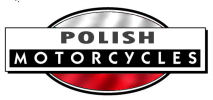




Overview
Manufactured by Zakłady Wyrobów Metalowych (ZWM) 1959-1965
The first mopeds were fitted with a 49.8cc SM01 engine, with later models fitted with the SM38 as used in the Zak.
Ryś MR1
The first Polish moped was built in 1957. In January 1957, the construction assumptions of the vehicle were defined in Zakłady Metalowe in Wrocław - Zakrzów, and in May the prototype was ready. It has been approved for serial production. A team of designers composed of: Eng. Zbigniew Domicz, Eng. Edward Janas and Eng. Roman Wachowiak, developed a vehicle that gained the recognition of professionals and could compete with mopeds produced at that time abroad. It was characterized by an aesthetic silhouette, good suspension and an economical engine, which was manufactured in the Wrocław-Psie Pole Communication Equipment Factory. In Rysiu, the rear wheel suspension was originally solved using a single central spring. Serial production began in 1958.
Engine - Type SM01, spark ignition, two-stroke, with backwash, rigidly mounted in the frame. Bore 38 mm, stroke 44 mm. Number of cylinders l. Engine displacement 0.049 litre, compression ratio 6.5. Maximum power' 1.1 kW (1.5 hp) at 5000 rpm. Maximum torque 2.55 Nm (0.26 kGm at 3,500 rpm. Vertically split cast light alloy crankcase also housing the clutch, gearbox and magneto. Cast alloy ribbed cylinder, cylinder liner made of cast iron Ribbed light alloy head with decompressor Forged, foldable crankshaft supported on two ball bearings Cast iron connecting rod, double row roller bearing in alloy Cast light alloy piston with two sealing rings Floating mounted piston pin. Piston timing, controlled by the flow of charge over the piston edges Two through passages Engine lubrication with a fuel/oil mixture ratio of 20 : l Forced air cooling. Power supply: horizontal carburettor, type G12, with a throat diameter of 12 mm. Dry air filter, made of metal mesh, equipped with a shutter. Dry weight of engine with accessories and gearbox 10 kg.
Electrical system - Rated voltage 6 V. Spark ignition. Static ignition advance 34° before TDC (or 4.5 mm before TDC). Spark plug, M14X1.25 thread, 225 calorific value (Bosch). Ignition and lighting coil, fixed to the base of the magneto. Alternating current magneto generator, . p power 16 W, mounted on the left shaft stub. crank. Headlamp, optic diameter 100 mm, high beam and symmetrical low beam. One-tone disc horn mounted on the front fork under the headlight housing.
Transmission - Friction clutch, wet, double disc, mounted on the gearbox shaft. Friction discs, with cork inserts. Power transmission from the engine to the clutch with a single-row chain measuring 3/8" X 7.5 mm. Number of links 48. Ratio 3.32. Gearbox with two ratios. Gears constantly meshed. Ratios on individual gears: Ib-3, 25, IIb-1.55. Shifting gears by a lever located on the steering wheel. Drive output to the rear wheel on the right side of the vehicle. Transmission to the rear wheel with a single-row 1/2" X 4.88 roller chain. Number of links 112. Gear ratio 2.68 (35/13). Chain tension adjustment.
Chassis - Open frame, single, welded from steel pipes. Central tube with dimensions of 50X2 mm. Head tube with two ball bearings. Front wheel suspension on telescopic fork, without hydraulic damping. Coil springs. Fork shelves made of pressed pressed metal. Front wheel travel 85mm. Rear wheel suspension on a trailing arm, with a central coil spring, with two rubber buffers. Friction damper mounted on the swingarm axle. Adjust the damping by pressing the friction plates with the adjusting nut. Rocker arm welded from steel tubes. Rear wheel travel 80mm. Spoked road wheels. Hoops made of steel. Tube tyres 2.125X23".
Brakes and Steering - Mechanically actuated, independent, drum brakes. Light alloy cast brake drums with steel insert. Internal diameter of brake drums 97 mm. The width of the friction linings is 20 mm. Front brake (handbrake) controlled by Bowden cable. The rear (foot) brake is controlled by a rigid link connected to the pedal by turning the pedals backwards. Handlebar made of steel tube, fixed with two clamps to the top shelf of the fork. Clutch lever and handbrake grips cast in light alloy. Clutch and handbrake levers pressed from sheet steel. Rotary "gas" handle, winding type. The speedometer is driven by a flexible shaft from the front wheel.
Bodywork - Deeply valanced pressed metal mudguards. The front guard is attached to the fork. Fuel tank welded from sheet steel stampings. Micro-rubber saddle, covered with winiderm, hinged to the housing. Tool box under the saddle. Side covers made of pressed pressed metal. Headlight, ignition switch and speedometer housing made of pressed pressed metal. Pedals with overlays, rubber. Central stand, welded from steel tubes. Incomplete drive chain cover, attached to the swingarm. Rack mounted on the rear mudguard. The exhaust silencer is located on the right side of the machine.
Dimensions - Wheelbase 1234 mm. Length 1887 mm, width 660 mm, height 1080 mm. Fifth wheel rise 845 mm, ground clearance within the wheelbase 140 mm.
Weight - 64 kg. Permissible load 90 kg. Permissible total weight 154 kg. Permissible boot load 5 kg.
Capacity - Fuel tank 5.75 litres (without reserve). Gear box 0.75 litre.
Operating data - Top speed 55 km/h. Fuel consumption 1.8-2.2 litresi/100 km. The smallest turning circle to the right is 1.94 m, to the left 1.56 m. Air pressure in the tyres: front wheel 0.175 MPa (1.75 kG/cm2), rear wheel 0.225 MPa (2.25 kG/cm2).
Sources:
Zabytkowemotocykleirowery Poland
Polish History Archive
Considerably more information on these machines here:
http://motocykle.svasti.org/index.html?strona=http://motocykle.svasti.org/wroclaw.htm